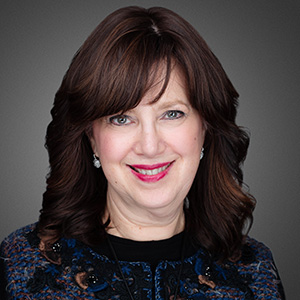Touch of Light


Pasha comes into an expensive clothing store. Her presence is immediately felt as she flashes the six-carat ring on her finger. With a shrug of her head, she lets it be known that she expects service, now!
Reb Yechezkel, a well-known community activist, enters the butcher store, filling his cart with a large order. He goes to check out, only to find that there are five people ahead of him on the checkout line. He takes out his cell phone, dials, and speaks so all can hear about the critical meeting starting in just a few minutes as he looks back and forth from his watch to the people ahead of him. The line parts, as each person on line graciously lets this important person pass until he is standing in front of the cashier.
Arnie Springer comes home after a long hard day at work and is annoyed that the toys are still on the floor. Before he sits down to dinner, he goes to pick up the toys, sighing loudly each time he bends down. There is a quiet tension in the home. No one speaks until he is settled at dinner, and half his plate is already eaten. Normal conversation then resumes.
Bubby Feldheimer arrives for a visit to her son and daughter-in-law’s home. After the first flurry of excited hellos, and a light meal, everyone returns to their routine. Bubby sits in the recliner in the living room. “Arele, can you bring me my slippers?” “Shaindel, can you make me a tea with one teaspoon of honey and a squeeze of fresh lemon?” “Nussie, please move your puzzle off the dining room table. The mess bothers me.” Shuli, her daughter-in-law, thinks to herself, It’s going to be a long week.
Are the above scenarios problematic? One can argue, why should a community leader come late to an important meeting? Why shouldn’t a bubby be catered to?
Whatever your perspective, what these vignettes have in common is that in each case, the protagonist made his or her presence heavily felt.
Lightness of Being
The Talmud (Berachos 56b) teaches that Rabi Chanan said: “There are three dreams that foretell peace. These are a river, a bird, and a kettle.”
I once heard (from Rav Zev Leff) an explanation for why the bird portends peace. A bird can be sitting on a tree and singing, or plucking a worm from the ground, yet if a person approaches, he will fly off. He is light in his place. He will give up his place for you, even if he was there first. He isn’t stuck in his position or demanding his rights: he’s mevater, therefore at peace with everyone. Isn’t it interesting that the bird is the only creature that soars heavenward, drawing our attention upward? Perhaps it is his lightness of being that allows him to fly.
The dimensions of the Holy Ark were two and a half amos in length, an amah and a half in width, and an amah and a half in height. Yet if you measured from each side of the Holy of Holies to where the ark rested, it took up no space. This miracle teaches us that not taking up space, or — in human terms — making our presence lightly felt, is a mark of humility. This is certainly the humility that is expected of a Torah scholar, who is a representative of the Luchos that rested in the Aron.
Making that strong impression on others, whether through letting them know how important you are, imposing your preferences on others, or making demands, is often an indicator that your kavod atzmi is lacking. You feel something deficient inside, so you attempt to fill yourself through showing others that you matter, in the hope that their responses will make you feel more whole.
I know a middle-aged woman who lives alone with no family to speak of. She lives very frugally, saving for her older years, sensing that there won’t be anyone there to take care of her. The one indulgence she allows herself is that when she flies to Israel several times a year, she travels first class, where she is pampered and tended to and given the respect she does not receive from anyone else in her quiet life.
The Need for Honor
In truth, everyone needs kavod in their lives so that we don’t feel like a passing shadow that has form but no substance. The Alter of Slabodka (quoted in Alei Shur) goes so far as to say that a person cannot live without any kavod. Real kavod is internal; it represents a neshamah whose potential has been activated, engaging you enough to change the way you conduct yourself in the world and the way you view other people.
In fact, the more internal kavod you have, the less kavod you require coming in. The kavod requirement you have in your life will take the form of kavod that you express to others. The worst way to add to our kavod atzmi is to seek it from others. If what we need is to get in touch with our own internal kavod, how can an external expression of honor possibly fill us? My friend may enjoy her flight, but she gets off the plane in the same state she got on, because what she experienced is kavod medumeh, illusory external kavod.
Activating Soul Potential
What, then, is the pathway toward increasing our sense of our own kavod? Rav Wolbe quotes Rabbeinu Yonah in the introduction to Shaarei Avodah, stating that the first gate through which an individual can enter into service of Hashem is discovering one’s own attributes. Not the “Oh, you’re so smart, so pretty, so skinny” variety, but rather identifying within ourselves those attributes that create commonality with our Creator.
The attributes Hashem employs to interact with the world were also put into us. We too have the capacity for consistency, honesty, compassion, forgiveness, and the like. An individual’s uniqueness comes about from the particular mixture of those attributes that the One Above poured into him. Seeing those qualities as who he really is goes a long way toward helping him to identify with his neshamah, and see it as his real and essential self.
By definition, if you have a cheilek Eloka mima’al inside of you, then you are honorable. When you integrate that knowledge into your self-definition, you can then access your own neshamah. This helps you to recognize those Divine characteristics in others, allowing you to give real kavod to others.
If your child tends to tell tall tales, and you catch him telling the truth when he was tempted not to, making a big deal out of the fact that he told the truth not only encourages future truth-telling, it helps the child to identify an aspect of his soul. For if Hashem is emes, then our capacity for truth is an aspect of the Divine in us. By doing this, you have given the right kind of kavod to your child, and helped to activate the potential of his soul within him.
A Sense for What’s Within
Dovid Hamelech dances ecstatically in front of the Aron. Michal his wife sees him from the window and feels that it is a lack of honor for the king to behave that way. In calling him to task, she calls her husband “Echad min hareikim,” one of the empty ones.
Rabbi Akiva Tatz explains that her complaint was a deep one. She was implying: You brought out all your love for Hashem and His Torah by dancing wildly in front of the Aron. No one should empty themselves. Each person needs to keep some depth hidden away inside, protected from view. Dovid’s response was, “You think that’s all there is?” Michal misunderstood the depths of the soul of her husband.
The more we have a sense of what is internal and eternal within ourselves, the less (emotional) space we need to take up, and the less we need to demonstrate to others our value and worth. We can be secure in who we are, and feel satisfied from the giving, rather than the receiving, of kavod. With the lightness we acquire, we can be like the bird, who heralds peace and can soar to the heavens.
Originally featured in Family First, Issue 593. Debbie Greenblatt is a senior lecturer for the Gateways organization and a teacher of both observant and not-yet-observant Jewish women for over 30 years. Debbie’s lecture topics include Jewish texts, Jewish thought, and relationships.
Oops! We could not locate your form.







